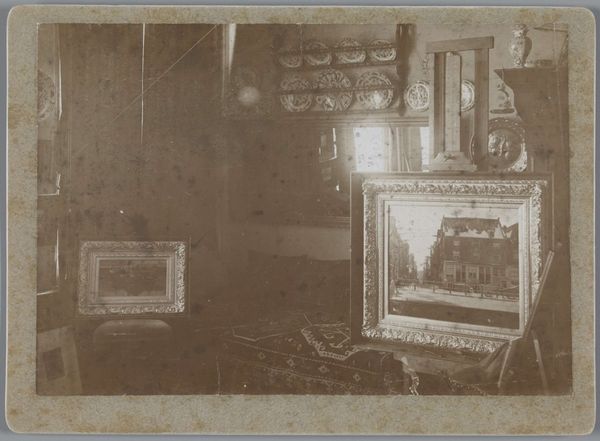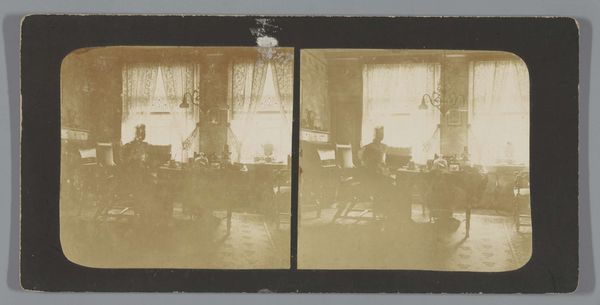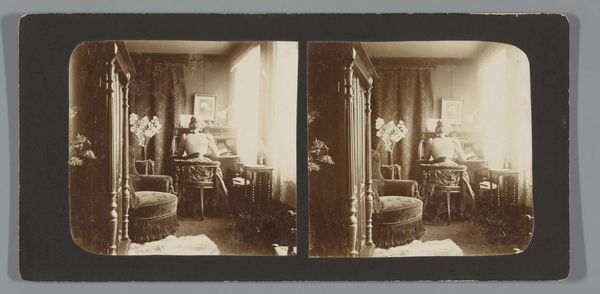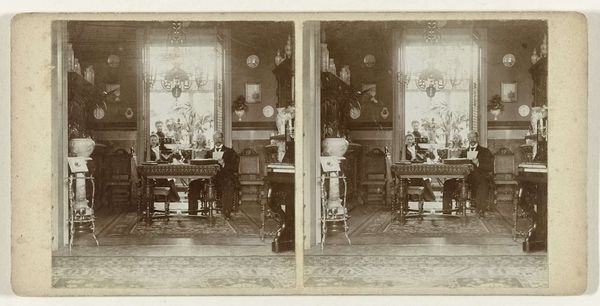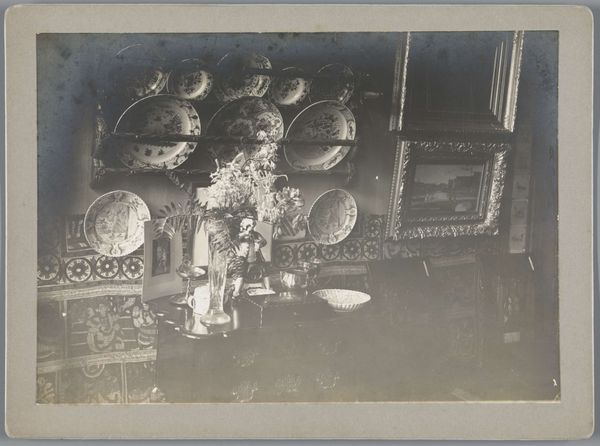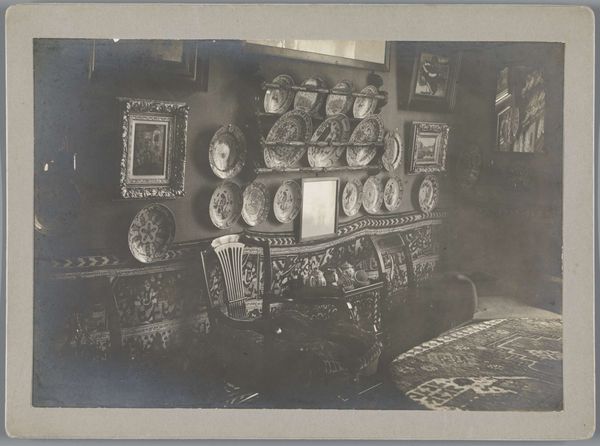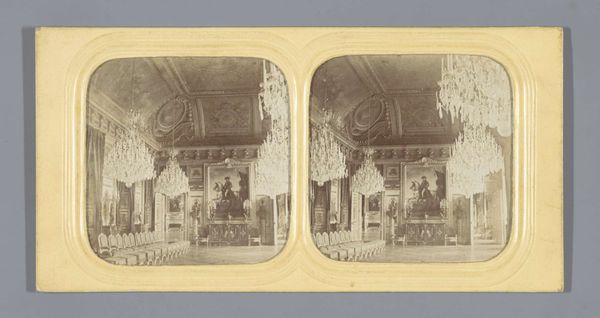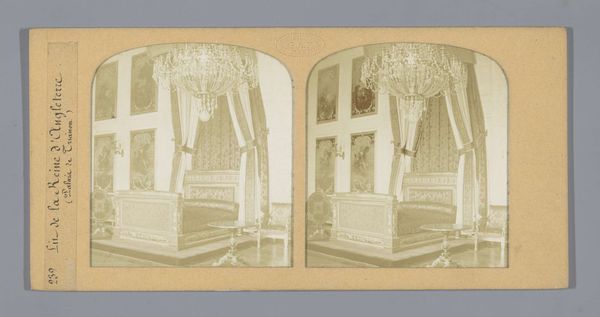
Kast in de voorkamer in het huis aan het Singel 256, Amsterdam, Nederland Possibly 1899
0:00
0:00
photography
#
sculpture
#
white palette
#
photography
Dimensions: height 88 mm, width 180 mm
Copyright: Rijks Museum: Open Domain
Curator: The photograph here is entitled "Kast in de voorkamer in het huis aan het Singel 256, Amsterdam, Nederland", likely from 1899, by Adrianus Scheltema-Beduin. It’s a view of an interior featuring a rather grand cabinet. Editor: There's a definite melancholy in this image, a faded elegance almost. The lighting certainly contributes, washing everything in a sepia tone, but there’s also something about the composition, the formality, that feels like a preserved moment, a quiet scene in a well-to-do home. Curator: It's interesting to consider the role such cabinets played within the Dutch domestic sphere at the time. They were not just storage; they were displays of wealth, taste, and social standing. Each object carefully placed within to convey the family’s story, their connections to trade and empire. Editor: Absolutely. The cabinet itself is a product of labor. Looking at the carving, you see the hand of the craftsman – likely highly skilled labor but hidden labour – made visible only through the final object now displayed for the consumption and viewing pleasure of the wealthy family. Curator: The decision to document this interior suggests a valuing of domesticity. Perhaps Scheltema-Beduin sought to elevate these everyday scenes to something worth preserving, reinforcing the ideals of bourgeois life through photographic representation. The image also contributes to shaping collective memory and visual codes for constructing national identity through documenting the urban landscape and interiors of homes in Amsterdam. Editor: It also hints at the relationship between art and craft. Consider, photography at that time was itself navigating the question of 'art' status, trying to set itself apart from industrial reproduction and staking its claim within the artistic realm. This image feels part of that negotiation, where photography looks at craft-made furniture inside middle class home. Curator: I see your point, particularly considering how museums were starting to codify aesthetic hierarchies. The photography flattens everything, giving a somewhat equal weighting to the wallpaper patterns and the shape of the cabinet, so the photograph shows all this "domestic display" being captured with then brand new technology of photographic techniques that was not even "high art" yet. Editor: So it is a visual essay about objects and technology within particular social stratum of late 19th century Dutch society. Curator: Yes, a snapshot of social history enshrined in photographic chemicals. Editor: And an intriguing convergence of art, craft, and commerce. Curator: Indeed, making one reconsider what these historical interiors tells us about consumption practices then and now.
Comments
No comments
Be the first to comment and join the conversation on the ultimate creative platform.
